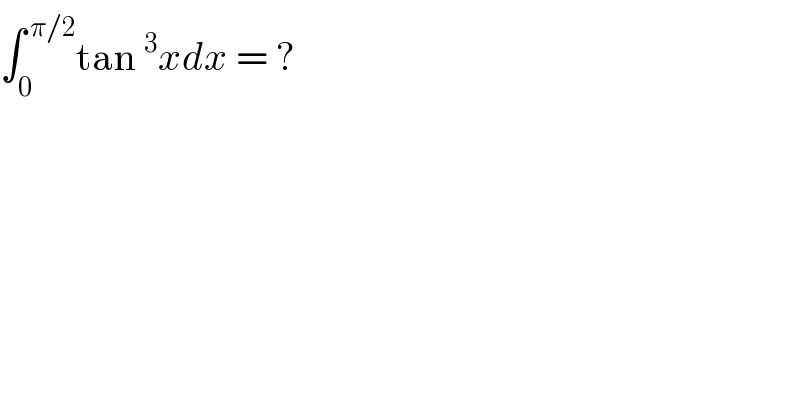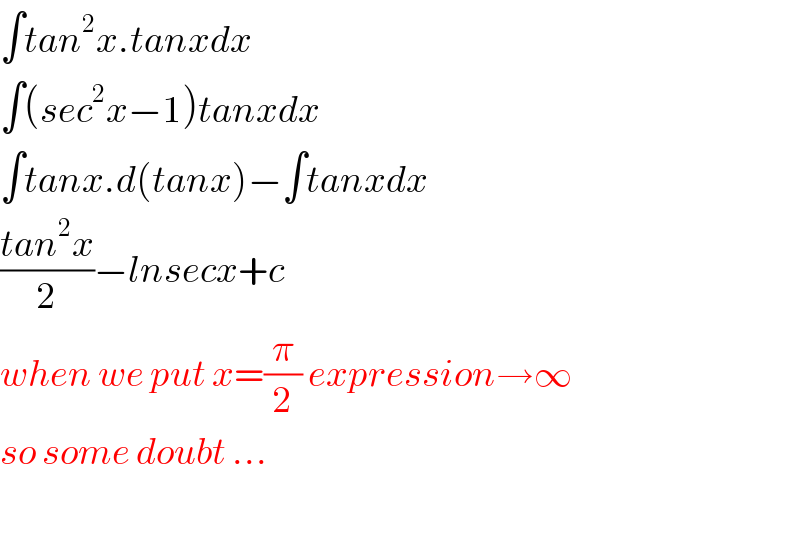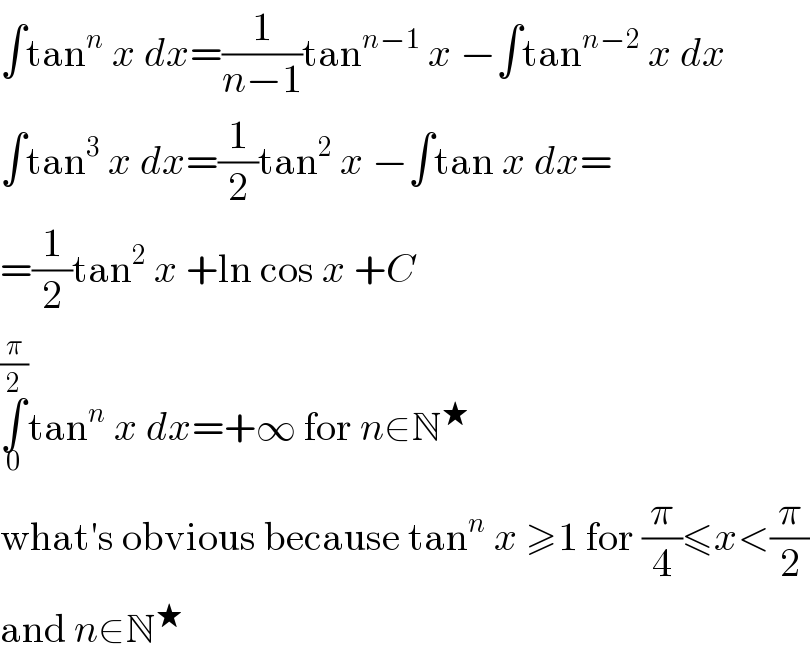
Question and Answers Forum
Question Number 65950 by ajfour last updated on 06/Aug/19

Answered by Tupac Shakur last updated on 06/Aug/19

Answered by Tanmay chaudhury last updated on 06/Aug/19

Answered by ajfour last updated on 06/Aug/19
![∫_0 ^( π/2) ((tan^3 xsec^2 xdx)/((1+tan^2 x))) let tan x=t ∫_0 ^( ∞) ((t^3 dt)/(1+t^2 )) = ∫_0 ^∞ ((t(t^2 +1−1)dt)/(1+t^2 )) =∫_0 ^( c→∞) [(tdt)−(1/2)(((2tdt)/(1+t^2 )))] = lim_(b→∞) [(b/2)−(1/2)ln (1+b)] f(b)=lim_(b→∞) ((ln (1+b))/b)=lim_(b→∞) (1/(1+b)) →0 ⇒ Integral →∞ (but answer in book R.S. Agarwal for class XII is a finite one !)](Q65964.png)
Commented by MJS last updated on 06/Aug/19

Answered by MJS last updated on 06/Aug/19

